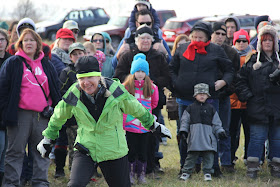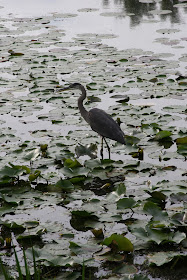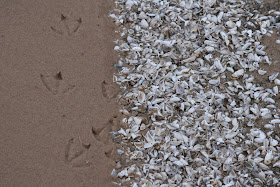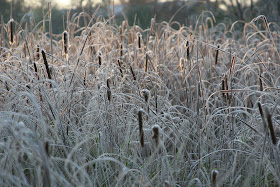To the sea
Fly like an eagle
Let my spirit carry me
I want to fly like an eagle
Till I'm free
-Steve Miller
"Fly Like an Eagle"
On Saturday (28 November 2015) we were lucky enough to attend the release of successfully rehabilitated Bald Eagle near Empire, MI. The eagle, nicknamed "Miracle Boy" was struck by a car in Wexford County and rehabilitated by Rebecca Lessard at Wings of Wonder. Wings of Wonder (WOW) is raptor education and rehabilitation center located near Empire.
I have given information on Wings of Wonder in two previous blog posts. Rebecca has brought several of the WOW ambassador birds to Mt. Pleasant for the 2014 and 2015 International Migratory Bird Day Celebration at the Ziibiwing Center. (Rebecca and the WOW birds will be back again in 2016!) In April 2015, Shara and I were lucky enough to get a private tour of the WOW facility.
Releasing injured raptors back to the wild is the ultimate goal of Wings of Wonder. Unfortunately, many birds that come in to Wings of Wonder are too badly injured to be released, this was initially thought of "Miracle Boy". He had suffered a spinal injury and was unable to walk - otherwise the bird was healthy. After veterinary consultation, he was given a course of steroids to reduce swelling. With luck, this would allow the spine to heal on its own.
Fortunately, this was exactly what happened and less than a month after being found the eagle was healthy enough to release back to the wild.
There was a large crowd of several hundred people on hand to witness the release.
 |
| Despite the cold temperature, a large crowd was on hand for the release. |
Before the release, Rebecca talked to the crowd about the mission of Wings of Wonder, the history of "Miracle Boy", and how the release would proceed. Member of the Wings of Wonder board of directors walked through the crowd collecting donations. WOW is completed funded by donations from the public.
 |
| Rebecca Lessard and two members of the WOW board of directors. |
 |
| Rebecca acting out a scene from the eagle's recovery |
Soon it was time for the release. The first step was to collect the eagle from a pet carrier where it had been waiting - Rebecca said it was a challenge to catch the eagle from the flight pen so it could be released. This is a good sign that it is a healthy bird.
 |
| The crowd anxiously awaits... |
 |
| Getting a secure grip on a mature eagle is a delicate procedure. |
After getting a grip on the eagle that would keep both eagle and handler from getting hurt, Rebecca walked around to show the bird to the crowd. "Miracle Boy" weighs approximately 6 pounds and has a wingspan of over 6 feet. He was quite a handful, fortunately Rebecca has many years experience handling large raptors.
 |
| It was great to see the number of kids in attendance - their reactions were priceless. |
 |
| A happy rehabilitator - release was just minutes away. |
 |
| Rebecca is great with crowds - patiently answering questions. The eagle was also patient - he had no other choice. |
 |
| Check out those talons and that hooked beak - perfect for catching and tearing apart prey animals. |
After a few minutes of showing the eagle to the crowd, it was time for the release. With a countdown of 5. 4. 3. 2. 1.
 |
| Counting down to release. |
 |
| Springing into flight! |
 |
| Gaining altitude! |
 |
| He didn't look back! |
With that, "Miracle Boy" was gone, a healthy wild bird once more. By Spring, he should be back into his home territory in Wexford County.
If you are able, please support Wings of Wonder with a donation - all of the money goes to the birds.
For up to date information about WOW events check out their Facebook page.
 |
| Me (in my new Wings of Wonder cap) and Rebecca Lessard |





















































